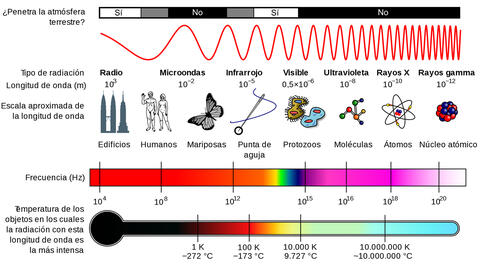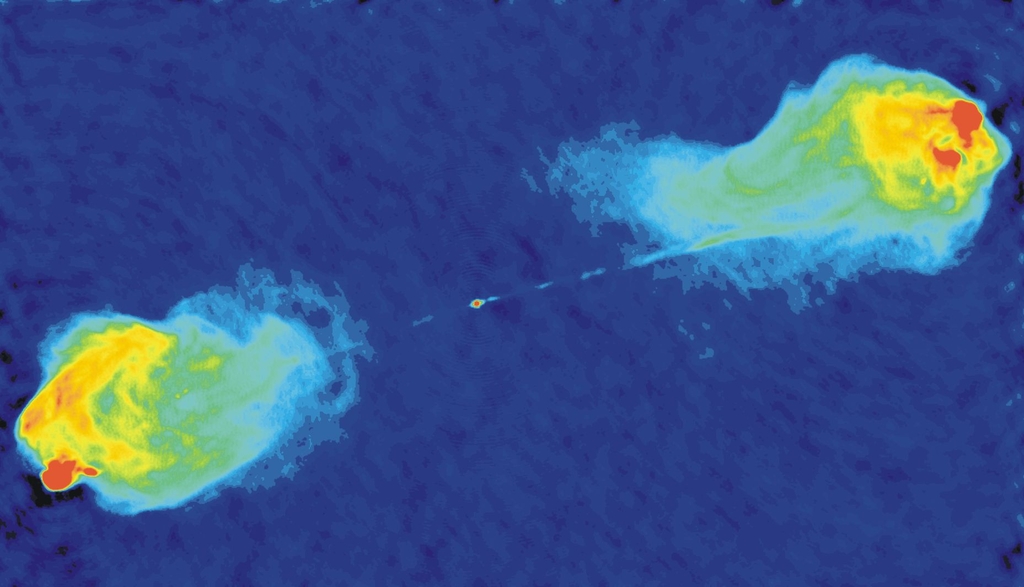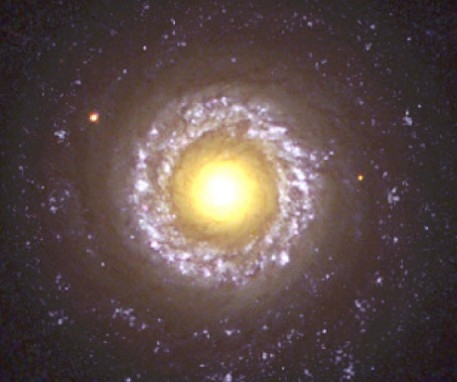What is an Active Galactic Nucleus ?

We’ve seen that a galaxy is a structured collection of star systems, dust and gas in space, bound together by gravity. Some galaxies have extremely luminous cores – Active Galactic Nuclei (AGN).
Most galaxies have a black hole at their centre, but an active galaxy’s black hole is even more massive, i.e. it attracts and “swallows” even more matter – we are talking of the order of several million or billion times the mass of the Sun. As well, an active galaxy emits more energy than the sum of the emission of its stars, more precisely it hosts a core which emits radiation with wavelengths belonging to a large range of the electromagnetic spectrum (radio to gamma emission have all been observed); however these galaxies all emit a variable flux of that excess energy.

Note that the waves with shorter wavelengths have the highest energies
The most well-known type of Active Galactic Nucleus (AGN) is the quasar, which is one of the most distant objects astronomers have been able to detect – this means they occurred when the Universe was still young. Since they are quite faint, they are difficult to distinguish and appear as quasi-stellar objects, aka they look like stars. However, thanks to their distance we can observe the redshift, a change in wavelength proportional to the speed at which a galaxy moves away from us in the expanding Universe, and thus, estimate the age of these giants.
Likewise, Blazars, BL Lacertae objects and Radio galaxies are very luminous, but as opposed to quasars they also emit jets of ionized matter in opposite directions, perpendicular to the galaxy’s disk. Since galaxies have a disk of matter surrounding the nucleus, our observations depend on the angle at which we look at a target. For instance, blazars shine their relativistic jets directly at us (luckily, they are far enough for this to not affect us but being close to such a source of energy would be devastating). These objects are often most impressive when observed in the radio regime, as you can see below.

Anyway, with Telescope Live you can observe in the visible wavelength part of the electromagnetic spectrum, so let’s look at what objects would constitute suitable targets. An AGN with a lower luminosity and specific emission characteristics is known as a Seyfert Galaxy; they were initially defined by Seyfert in 1943 based on their morphological traits, notably the luminous core and special spectral lines. Nearly half of all spiral galaxies could be Low Ionization Nuclear Emission-line Region galaxies (LINERs), which are also the most common type of AGN overall. These are similar to Seyfert galaxies but have slightly different spectral properties; they also make good targets, try the One-click observation of NGC 2841!

Cover image: Active Galactic Nuclei
Image Credits:
1 - The Electromagnetic Spectrum, Wikimedia Commons
2- Cygnus A, NRAO/AUI R. Perley, C. Carilli & J. Dreher
3 - NGC 7742, AURA/STScI/NASA
